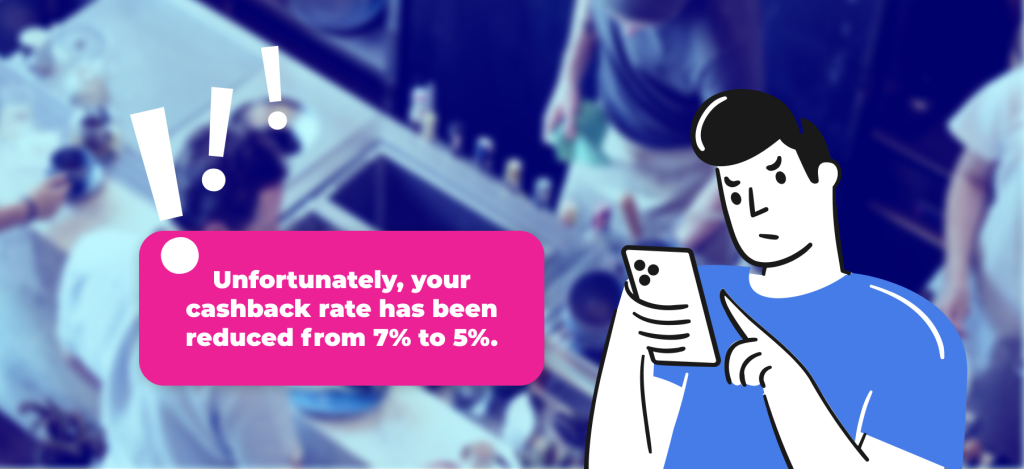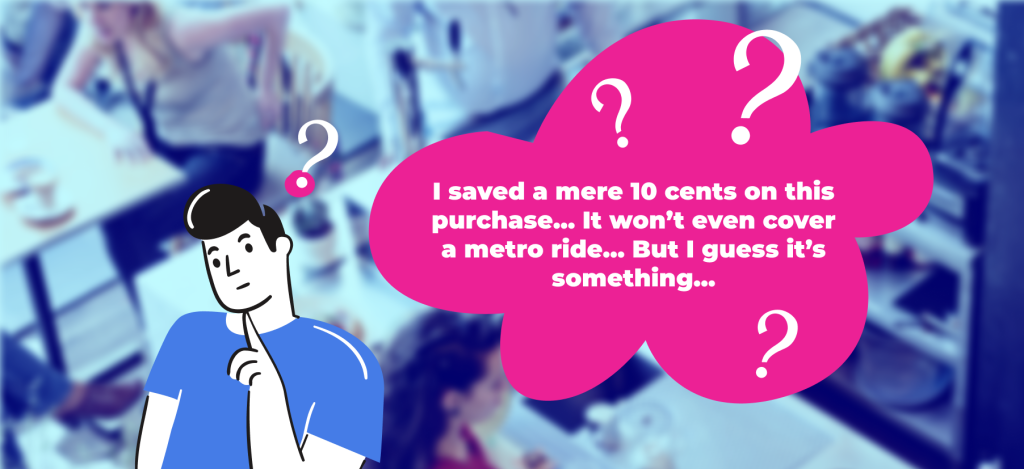
Is Cashback truly the king of restaurant loyalty program?
Cashback rewards have gained popularity; many assume it is a “king” when it comes to building in-depth loyalty. Customers earn money while shopping, and businesses gain revenue while they shop, a win-win solution that delights both parties.
However, are cashback-based loyalty programs a good solution for restaurants? Should you rely heavily on this strategy at this tough economic time? In short, No, you should not. Read on to find out why.
Understanding cashback
The concept of cashback is not new. While in the past, cashback had a strong association with a reward program for credit cards, over time, the technology has changed, and now cashback has expanded more as a customer loyalty mechanic.And as its name implies, cashback is a program in which customers can earn Cash Back as a percentage of the money they spend while shopping.
No wonder it has gained popularity in mobile apps because of its simple, yet fairly addictive formula. Each time customers make a purchase, they earn points that later transform into additional discounts in the store. And usually, the more money is spent, the higher the cashback rate that the customer receives. Consequently, this instant gratification reinforces repeat sales and helps businesses like yours retain customers and enhance their experience. In theory.
The Problems with Cashback Loyalty Programs. Are there any?
At LoyaltyPlant, we can prove that cashback is not a “king” when it comes to r restaurant loyalty. Our conclusion is based on our extensive experience working with over 600 businesses. We have analyzed cashback programs from different angles, including country, business size and type, and discovered that they may not be as effective in motivating customers as it seems. In fact, only a few restaurants have reported positive outcomes from their cashback-based programs.

Firstly, the cashback reward system does not allow flexibility in the loyalty program. Other than simply increasing the cashback percentage, there is little to do. Quite a risky strategy, as customers perceive the discount as a new norm over time. And to attract their attention, you need to offer an additional increase in the %, which is limited to your break-even point.
And what if you see that the current cashback % is actually harmful for the business, and you need to adjust by lowering it for your loyal customers? Be ready to face the consequences, as this change is very apparent, and not many people are going to love it – the loss of their benefit is clear as day in this case. In particular, when they lose something that they have been earning over time and got used to.
Another issue with loyalty cashback is the overall distribution of the benefits. Those who are new to the product or service receive the lowest cashback discount, whereas long-term customers receive the highest. This means that new customers receive less benefit, and it may require additional effort and expense to make them really engaged and encourage them to become regular customers. The instant reward that they get with this type of loyalty program is very small, and the perceived value is even smaller. Meanwhile, regular customers who should be contributing the most to revenue are taking the most marketing budget but giving little back due to their constant discount. Thus, you are putting in extra money where you could have avoided and not getting enough where you could.

Third, one major drawback of cashback rewards is the lack of emotional connection. Being purely monetary in nature, the perceived value of such rewards is not high compared to what it really costs your business – and it is incapable of creating long-term appreciation. This means customers do not view cashback as a branded loyalty currency with trophy value. Instead, they often see it as just another discount, which they may not even notice over time.
Cashback rewards might not be the most effective method for building customer loyalty in the restaurant industry. While there are some benefits to using cashback rewards in certain situations or industries, for restaurants it has limitations. For example, it lacks variation and can be financially complicated. Additionally, it doesn’t foster solid emotional connections with customers, which all modern loyalty programs should really be about, considering that emotional value replaces rational value in modern consumer behavior.
To explore an alternative approach, consider reading “Why choose a reward-based loyalty program instead of discounts?” which offers a compelling solution for restaurants looking to achieve their long-term goals.

)
)
)
)
)
)
)
)
)
)